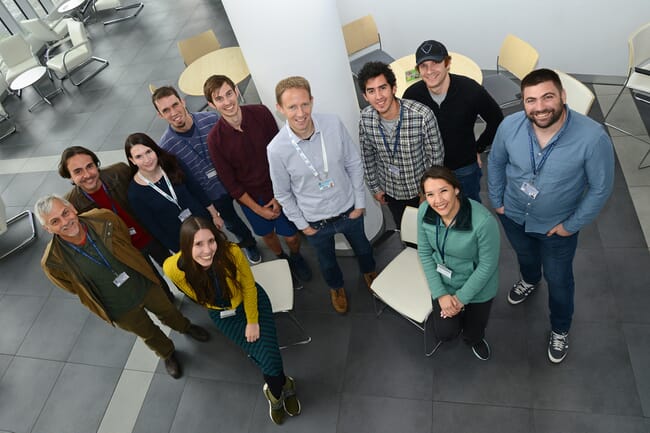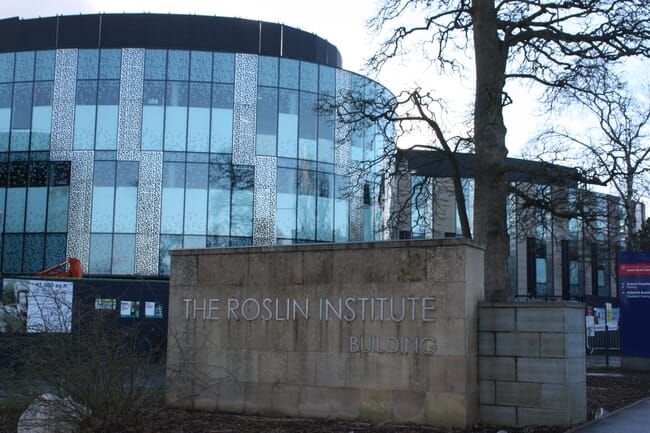In the first part he explains how fish genetics has evolved since he began his research role at the Roslin Institute in 2004 – since when he’s been involved in some of the biggest breakthroughs in aquaculture genetics to date.

What appealed to you about fish genetics?
I did my PhD in pig genetics at the University of Aberdeen. After completing that, in 2004, I went straight to a post-doctoral position at Roslin in salmon genetics - it seemed like a new and exciting sphere of research: very little had been done in terms of applying molecular genetics to fish.
What was your first project?
The first project I was involved in we used microsatellite genetic markers to look for genes effecting resistance to the viral disease infectious pancreatic necrosis (IPN). It was a nice start because we were able to find a major gene effect. It was a collaborative effort, mainly Scottish-based at the time, affiliated with Landcatch [now part of Hendrix Genetics] and the University of Stirling’s Institute of Aquaculture. That IPN QTL became a famous example of how molecular genetics could feed into practical salmon breeding and farming, because it was relatively simple to predict which individuals were going to be resistant and which ones were going to be susceptible. It was easy to understand, and it had a positive economic and animal welfare impact.
Sounds like a major breakthrough
This work, coupled with the research led by Dr Thomas Moen with AquaGen in Norway, meant that genetic markers linked to resistance were soon applied to breeding programmes. And, because this had a big effect, it became acknowledged among farmers that genetics can have a major impact on something that is very relevant to them. There’s a paper published in 2017 by Dr Ashie Norris of Marine Harvest that describes the incidences of IPN outbreaks from when companies started using that test. And you can see that it’s gone from several million IPN-related salmon mortalities down to near zero over a period of five years. It’s difficult to say that it’s entirely due to the genetic test, because it could be due to other changes as well, but it was widely attributed to the genetic test.
Did this revolutionise how genetics was used and also how it was viewed by the farmers?
I think it got farmers and production companies interested, and also sparked increased interest in the use of molecular genetics in breeding as a tool to help improve production. There was this period where the rather optimistic feeling in the community was that we can do this for every disease. And it’s easy! You just do a study, find the gene and use a marker – problem solved. However, we tried this for other diseases and found that IPN was a bit of a rare case, possibly even a unique case, in which resistance was almost entirely controlled by one locus.
We found out that, most of the time, the genetic component to resistance is spread across many different genes, all throughout the genome of the salmon. No single marker can capture all of that, so it’s more complicated.
Did you have to develop new techniques to meet this challenge?
At around the same time, our group and others started developing new tools to measure genetic variation throughout the genome of the salmon and, in 2013, we were involved in the creation of a high density SNP (single nucleotide polymorphism) chip – a little glass slide that contains tests for up to hundreds of thousands of individual SNPs that are spread throughout the genome of the salmon.
The salmon genome typically contains millions of SNPs, but we tend to select tens of thousands that are evenly spaced throughout the genome. This has allowed us to use genomic selection – which enables you to pick up on all those small effect genes that affect the trait that you’re interested in. This works well for using breeding to improve traits controlled by multiple genes, such as such as sea lice resistance, AGD resistance, growth rates, and fillet characteristics.
Using this genomic selection technique picks up on all of those small effect genes, and that allows you to predict more accurately which parents are likely to produce the most disease-resistant offspring in the next generation.
Is all of your work focused on salmon?
At the start it was mainly salmon, as salmon tend to lead the way in terms of genetic technology, which is mainly a factor of the size and financial clout of the sector. It’s similar in terms of its structure and technology to some terrestrial livestock breeding and tends to have specialised breeding companies, like Benchmark, Hendrix, and AquaGen, but it’s not always the case – for example Mowi has an integrated breeding programme as part of their production.
Although salmon have led the way in terms of applications of genetic technologies, other aquaculture sectors have now seen what’s possible. In addition, as these sectors have consolidated and grown a bit they have started to use similar technologies for the genetic improvement of their stock. For example, within Europe, the seabass, sea bream, rainbow trout and shellfish sectors are all using genomic selection now.

What projects are you currently working on?
We’ve just started a 3-year project on selective breeding called AquaLeap – part of the BBSRC and NERC UK Aquaculture Initiative – which is focused entirely on genetics and breeding, specifically within the UK sector. It aims to facilitate the transfer of the latest techniques and technologies between some of the more advanced industries like salmon to some of the less advanced sectors – such as lumpsuckers, oysters and lobsters.
Are there any particular traits that you’re looking for in these species?
We’ll be using genomic tools to support the domestication and the beginning of breeding programmes for all these species. In some cases we focus on specific traits, but we are also focused on the establishment of the breeding programmes – by looking at genetic diversity and establishing the right stock.
We’re also looking at oysters – there’s a fair amount of research going into European flat oyster (Ostrea edulis) and we’re looking at using a SNP-chip that we’ve developed for oysters to assess resistance to the problematic parasitic disease bonamia. This is to help with both aquaculture and restocking schemes. We will also research Pacific oysters (Crassostrea gigas), which we’ve done a fair amount on already relating to resistance to oyster herpes virus.
Project partners include Hendrix, Xelect, Otterferry Sea Fish, Tethys Oysters and the National Lobster Hatchery – so it’s a real collection of diverse sectors and species. And, for the less developed species, we’re going to be sequencing their genomes, or producing improved assemblies of sequences of their genomes. We will also develop new genetic marker panels to get a track on stock diversity and look at the relationship between markers and important traits like disease resistance.
How do you keep up with the rapid advances in techniques and technologies?
We have a great team here at Roslin: with excellent post-doctoral scientists and PhD students working on different aspects of aquaculture genetics. We’ve recently hired a new reader in fish genomics, Dr Dan McQueen, who has moved down from Aberdeen, and also two tenure track fellows (Dr Diego Robledo and Dr Tim Bean). So we’re rapidly expanding our aquaculture genetics research portfolio within the institute and the university.
For me it’s really important to keep in touch with the industry, because the industry define problems first, and we then the look at ways of tackling them, so our research is quite applied. I also think it's important to attend the right scientific events, like the Plant and Animal Genome Conference (PAG), where you can learn about the latest technologies and techniques that are being applied in plants and livestock, or even for medical research, and have potential for applications in aquaculture.
Our aquaculture research here at Roslin has a strong focus on genetics and breeding. The institute has a broader focus and bigger depth in terms of terrestrial livestock, and I think that helps in terms of learning what they’re up to, and transferring techniques and skills across sectors.
In the next installment, to be published on The Fish Site next week, Ross discusses the latest gene editing projects and his dream research role.

